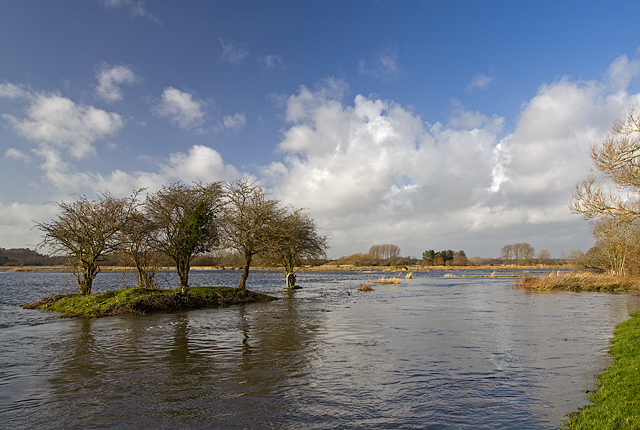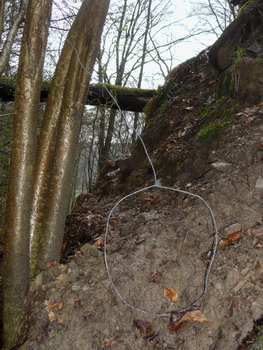The tiny pores under the surface of the leaves called stomata are primarily responsible for the intake of carbon dioxide that plants need for photosynthesis. During the daytime, the pores are open to allow the maximum intake of the gas in the presence of sunlight so that plants can produce their food. But what happens when there is an overabundance of carbon dioxide in the air – much more than any plant requires? It seems it can lead to more floods.
In a study published this week in Nature Climate Change, researchers from the University of California-Irvine describe how grass, plants, and trees are adapting to the increase in the carbon dioxide gas in the atmosphere by limiting the opening of the stomata pores.
Now, leaf stomata play another important role besides CO2 intake – that of releasing water into the atmosphere which travels from the soil through the roots and stems. If the plants constrict their stomatal pores to regulate the amount of the gas they consume, it is also limiting the release of water from the leaves through evaporation. This means that there is more moisture in the underground soil, causing more efficient run-off and riparian or river flooding.
:max_bytes(150000):strip_icc()/plant-stomata-function-4126012-01-025d7d9b984d46c2b9f9ab5290d25838.png)
“Add this up over billions of leaves in very sunlit, leafy places, especially the tropics, and it means there is a bunch more soil moisture stored up underground, so much so that climate models predict rainfall events will saturate the ground and more rain will run off into rivers,” says study co-author Mike Pritchard, UCI assistant professor of Earth system science.
Also Read: 11 Himalayan Animals and Plants Fighting Climate Change
Pritchard said this so-called forest effect dominates atmospheric responses to CO2 on most landmasses up to 30 degrees north and south of the equator, which is where most people live.
The Twin Effect
While Pritchard analysed the Mississippi river basin, in particular, the study found how the twin effect of plant physiology and rain anomalies due to atmospheric warming are conspiring to ‘juice up’ the future flood statistics in equal proportions.
Lead author Megan Fowler, a former UCI graduate student in Earth system science, said that “for this study, we looked at how climate change will affect future river flows worldwide and found that instead of the usual suspects in the water cycle — changing regional rainfall from global warming or other impacts of more CO2 in the atmosphere — it’s actually how low-latitude vegetation physiology reacts to increased carbon in the air that plays an outsized role in river dynamics.”
Also Read: Plants Can Learn and Remember Just Like Animals
The researchers conducted their experiment using granular river flow data and the world’s most popular Earth system model, developed by researchers at the U.S. National Center for Atmospheric Research and the U.S. Department of Energy.
“Neither of these are unusual tools,” Pritchard said. “They just happen to have not been linked in this way before.”
The scientists conducted one set of experiments in which they ramped up CO2 on the leaves and conducted others in which they added the gas to the atmosphere to make warming happen. Then they did both in tandem to try to determine the factors’ relative contributions to the results.
“These are the hand-of-god-type experiments that are the whole point of having climate models,” Pritchard said. “In nature, there’s no way to separate the effects of temperature and leaf physiology with heightened CO2 in the atmosphere, but we can do that quite successfully with our models.”
The experiments thus showed that the leaves were adapting to the increased carbon dioxide in the atmosphere by partially opening their pores.
The scientist now wants to turn this into an on-ground study.
Well known in the climate research community for his work on the physics of clouds, turbulence and rainfall, he noted: “But now I’m realizing that addressing uncertainties like the actual magnitude of the stomatal effect in tropical ecosystems — where field experiment data is sparse — may be just as important. This is probably behind in terms of scrutiny compared to issues with clouds and rainfall that are better constrained by satellite data. Maybe it’s time to bring it down to Earth.”
Flooding in India
Unusual monsoon patterns have caused heavy flooding in Karnataka, Bihar, Uttar Pradesh, Maharashtra, Rajasthan, Madhya Pradesh, Delhi, Assam, Odisha, and Kerala this year, with some states battling it even now. Flooding from the Godavari river in Andhra Pradesh state alone this year has affected over 74,000 people in the two districts of East Godavari (52,500 people) and West Godavari (21,568), according to the state’s Disaster Management Authority.
According to India’s Central Water Commission (CWC) the Godavari river at Dowlaiswaram in East Godavari District stood at 14.97 metres on 04 August and was forecast to rise to above 15 metres. The warning level is 14.25m and danger 16.08m.
This is just one example of how river flooding events are increasing across the country each year. If the atmospheric carbon dioxide continues to rise it would help to understand how changing survival strategies of the plants could be one of the reasons for the rapidly overflowing rivers.









